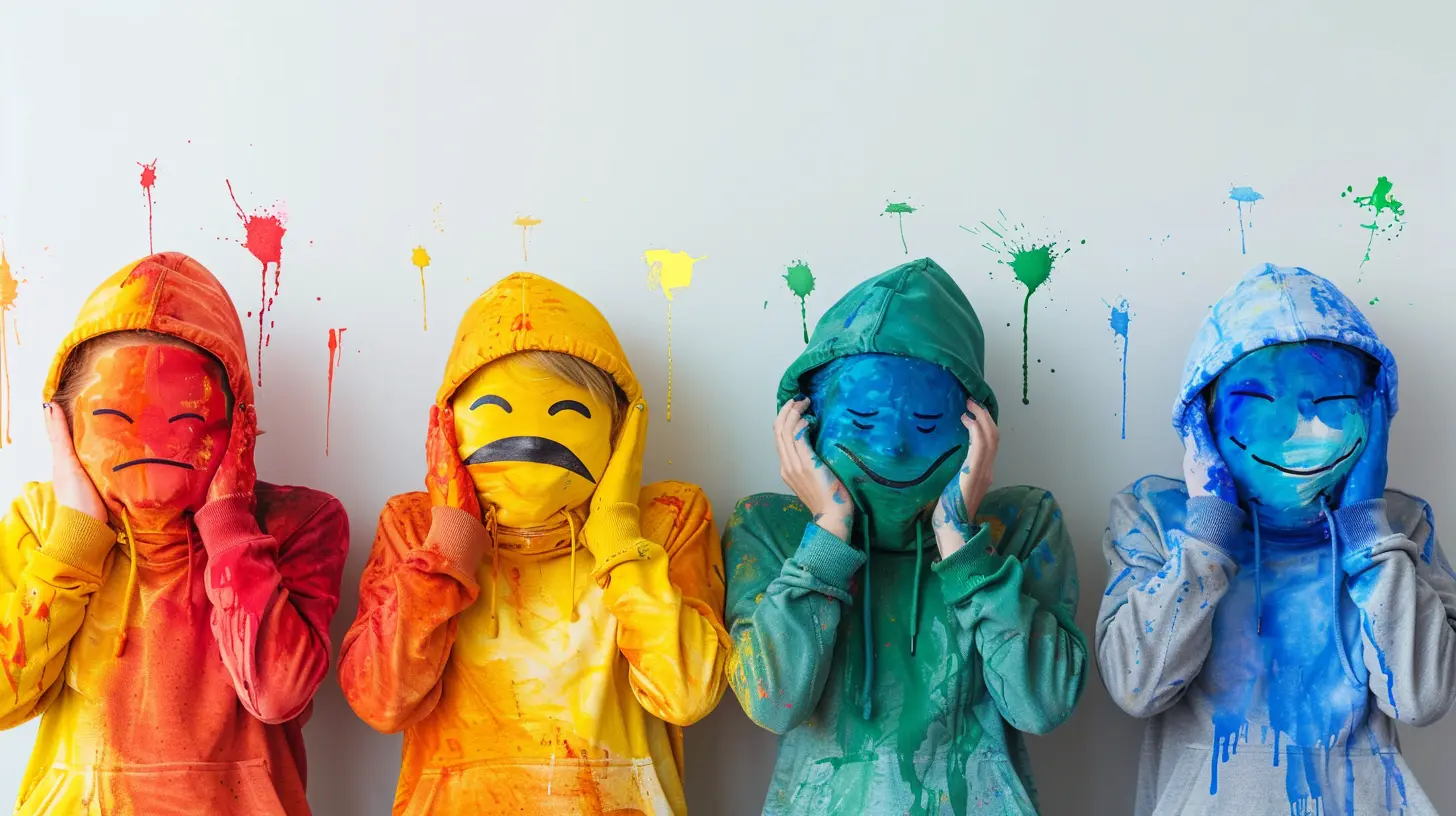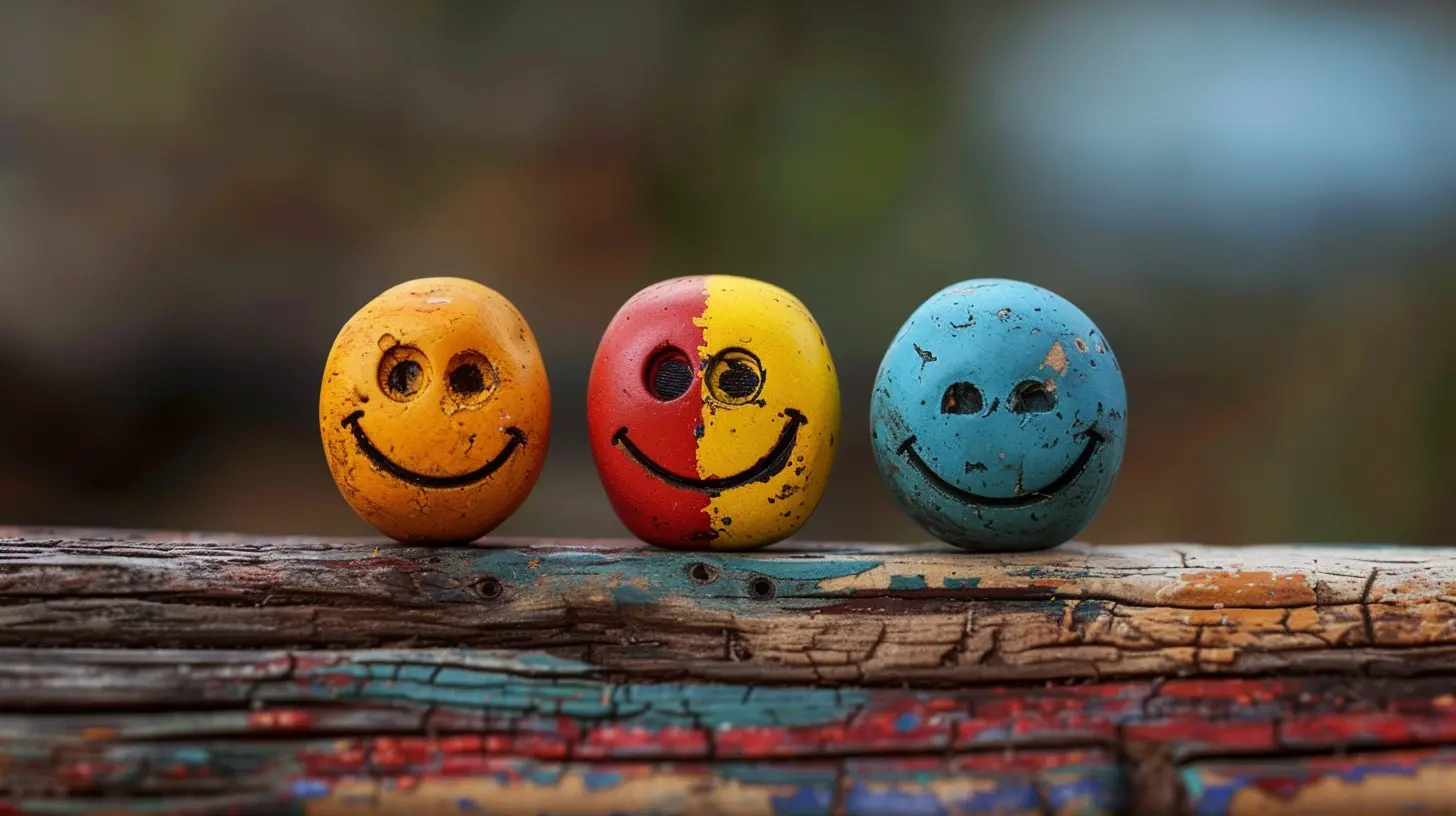Emotional Contagion: How Empathy Affects Group Dynamics
4 November 2025
Ever walked into a room where everyone was laughing and, before you knew it, you were smiling too—even if you didn’t get the joke? Or maybe you’ve found yourself suddenly on edge because someone else in the group was visibly anxious. That, my friend, is emotional contagion at work. It’s the psychological version of catching a cold—but instead of germs, we're spreading feelings.
And guess what? It’s more common—and powerful—than you think.
Whether you’re part of a family, a work team, or a group of friends, emotions ripple through our social environments like waves. At the core of this phenomenon is empathy. But how exactly does empathy influence how emotions spread? And what impact does that have on group dynamics?
Let’s dive deeper into this emotional domino effect and see how understanding it can actually improve the way we connect, lead, and collaborate.
What Is Emotional Contagion, Anyway?
Let’s break it down. Emotional contagion is when one person's emotions and related behaviors trigger similar emotions and behaviors in other people. Think of it as psychological mirror neurons doing a little dance in your brain.It happens fast. And most importantly? It’s often unconscious.
Have you ever felt sad after watching someone cry on TV—even if you didn’t know the context? That’s a clue. Your brain is wired to “catch” emotions, especially from people around you.
The key players behind this are:
- Facial expressions
- Tone of voice
- Body language
- Empathy
So when someone walks into a meeting with a scowl and heavy sighs, it doesn’t just signal a bad mood. It invites others to feel that negativity, too.
The Science Behind The Emotional Ripple Effect
This isn’t just feel-good fluff. Emotional contagion is backed by some serious neuroscience and psychology.Let’s pull back the curtain a little.
At the core of it all are mirror neurons—specialized brain cells that activate when we observe someone else expressing emotion. These neurons give us the urge (and sometimes the need) to mimic what we see. Smile at someone, and they’ll likely smile back. It’s almost automatic.
But there’s more to it than mimicry. Emotions are chemically contagious too. When someone laughs, your brain may release dopamine, the feel-good hormone. When someone is stressed, and you sense it, your body may spike its cortisol levels. That’s how finely tuned we are to the emotional frequencies around us.
Empathy plays a huge role here. It’s the bridge between recognizing emotion in someone else and actually feeling it ourselves.
Empathy: The Sneaky Driver Behind Emotional Contagion
Okay, so emotional contagion spreads feelings. But what actually fuels that spread?Say hello to empathy.
Empathy is our ability to understand and share the feelings of another. But it’s not just about being “nice” or “compassionate.” In group settings, empathy is the silent architect that shapes the emotional tone.
Here’s how:
1. Cognitive Empathy – You understand what someone is feeling.
2. Emotional Empathy – You feel what someone else is feeling.
3. Compassionate Empathy – You take action to help.
Emotional empathy is the most relevant here. That’s the one that sets off the true contagion. It acts like a social antenna, picking up on others’ emotional signals and transmitting them through the group.
When one person cries, another feels a lump in their throat. When one person becomes anxious, others shift in their seats. That’s emotional empathy in action.
Now multiply that by several people, and you’ve got a full-blown emotional climate.
Group Dynamics 101: Why Emotions Are Never Just Personal
Ever noticed how a group project can turn chaotic if just one person is stressed out? Or how a calm, confident leader can make everyone feel grounded?That’s emotional contagion in action—on a group level.
Groups don’t just reflect a mix of individual personalities; they develop shared emotional states. These emotional states can either help a team thrive or drag it down.
Positive Emotions in Groups
When positivity is contagious, the results are magical:- More cooperation
- Higher creativity
- Better problem-solving
- Increased trust
A cheerful, optimistic member sets the tone, and, boom, people feed off that vibe. Productivity spikes, conflicts decrease, and suddenly, meetings aren’t so painful.
Negative Emotions in Groups
But the dark side? That’s just as powerful:- Anxiety spreads like wildfire
- Motivation dips
- Miscommunication rises
- Blame starts flying
One person’s stress can tank the morale of an entire team. It's like dropping a drop of ink into a glass of water—it spreads fast and tinges everything.
Empathy in Leadership: A Hidden Superpower
Let’s talk about the boss, the team lead, the one in charge. Why does their emotional state matter so much?Well, leaders act as emotional thermostats. Their emotions set the temperature for everyone else.
If a leader walks into a room radiating frustration or anxiety, others will absorb and reflect it. The same goes for calmness, enthusiasm, and confidence.
This is where empathetic leadership shines. When a leader practices emotional awareness and genuinely tunes into the team’s emotional state, they can:
- Address tensions early
- Celebrate wins in meaningful ways
- Keep morale balanced
- Encourage emotional safety
Empathy isn't weakness—it’s tactical awareness. And in group settings, it’s leadership gold.
Emotional Contagion in the Digital Age
You’d think this emotional domino effect only happens face-to-face, right? Nope.Even in the world of Zoom meetings, Slack messages, and social media, emotional contagion doesn’t hit the brakes. In fact, digital communication might amplify it.
The catch? It’s harder to spot.
We’re missing tone, body language, and real-time feedback. But emotionally charged emails, passive-aggressive comments, or overly enthusiastic emoji-filled messages still carry emotional weight—and they still spread vibes.
Ever received an all-caps email and immediately felt your heart rate spike? That’s still emotional contagion, just downloaded into your inbox.
How to Stop the Emotional Spiral
We’ve all been there—one person’s panic starts a chain reaction and soon everyone’s melting down. So how do we not get pulled into emotional whirlpools?Here are some quick strategies to keep group vibes healthy:
1. Pause and Reflect – Before absorbing others’ emotions, check in with your own.
2. Name It to Tame It – Recognize and label the emotion. “I’m feeling anxious, but that might not be mine.”
3. Set Emotional Boundaries – Be empathetic, but protect your peace.
4. Neutralize with Calmness – Model the emotion you want others to mirror.
5. Talk It Out – Sometimes, openly acknowledging the emotional tone breaks the cycle.
Being emotionally self-aware is like having an umbrella in a downpour. You may not stop the rain, but you won’t get drenched either.
Emotional Contagion in Relationships
Let’s zoom in on smaller group dynamics—like couples or best friends.In close relationships, empathy and emotional contagion go into overdrive. Partners can pick up on each other’s moods instantly—even from a simple “hello” or the way someone closes a door.
This can deepen connection or create tension, depending on how it’s handled.
Positive emotional contagion can create synchrony—shared laughter, intimate understanding, and emotional support. But negative contagion? That’s where cycles of misunderstanding or arguments can spiral.
The best couples and friends? They learn to identify when emotions are being shared, and when they’re being projected. And they communicate about it.
The Bright Side: You Can Be a Positive Emotional Influencer
Here’s the good news: emotional contagion goes both ways. So you can be the person who brings emotional sunshine into a group.Just by showing up with positive, calm energy, listening deeply, and using empathy wisely, you can shift the entire emotional tone of the room.
It’s not about faking happiness or ignoring negativity. It’s about being emotionally intentional. You get to decide which emotions you pass on—like choosing to throw a pebble of joy into the pond and watching the ripples spread.
So next time you're in a group setting, ask yourself: “What emotional signal am I sending out right now?” You might be affecting others more than you realize.
Final Thoughts
Emotional contagion isn’t some abstract idea. It’s happening all around you, all the time. Every laugh, every sigh, every tense glance—it all contributes to the collective emotional experience of a group.Empathy is what gives this phenomenon its power. It's the bridge between your emotions and mine, between individual feelings and group dynamics.
If we become more aware of emotional contagion and learn to wield empathy consciously, we can build better teams, deeper relationships, and more emotionally intelligent communities.
So go ahead—be the emotional thermostat in your group. Set the temperature to something positive and watch how the entire room changes.
all images in this post were generated using AI tools
Category:
EmpathyAuthor:

Alexandra Butler
Discussion
rate this article
1 comments
Henrietta McCall
Understanding emotional contagion can deepen our connections and enhance group harmony and support.
November 5, 2025 at 4:39 AM

Alexandra Butler
Thank you! I completely agree—recognizing emotional contagion is key to fostering deeper connections and promoting a supportive group environment.


